Four new faculty hires are a quantum leap for experimental physics
New assistant professors cement UC Berkeley's leadership in quantum science and technology

Courtesy of Department of Physics
August 1, 2024
Already known as a leader in quantum science and a testbed for quantum computing, the University of California, Berkeley, is expanding its footprint with the hiring of four early-career experimental physicists who use quantum systems to explore new frontiers in physics.
The new assistant professors of physics will augment a wide range of quantum research already underway in the departments of physics, chemistry and engineering, much of it in collaboration with Lawrence Berkeley National Laboratory. They will arrive within the next year and will leverage the weird quantum properties of atoms and light to make sensitive detectors or improve quantum computing and networking.
Chiara Pancaldo Salemi, for example, employs the quantum properties of superconducting circuits to search for dark matter particles called axions. Aziza Suleymanzade is using entangled photons in optical fibers to network quantum computers. Victoria Xu squeezes light to improve detection of gravitational waves. And Harry Levine entangles trapped neutral atoms to explore new types of qubits and reduce the noise in today’s quantum computers.
“It’s highly unusual to hire four experimentalists in one year, especially considering the high cost of startup research support and lab renovation, so this is a real statement that Berkeley is committed to the emerging field of quantum information science and technology,” said Steven Kahn, dean of mathematical and physical sciences in UC Berkeley’s College of Letters and Science and a professor of physics and astronomy. “These are the best young people in this super-exciting field. Each of them had multiple offers from competing institutions. The new directions their research will take us could be revolutionary.”
“It’s great to have four highly decorated, very talented early-career physicists join the department,” said Irfan Siddiqi, professor and chair of physics and a pioneer in using superconducting quantum circuits as qubits for quantum computing. “They bridge traditional fields of physics with more modern notions of quantum information science. What’s wonderful is, not only are they pushing a particular discipline forward, but they’re also seeing how harnessing the quantum nature of light and matter can push the limits of quantum sensors and the power of quantum computers.”
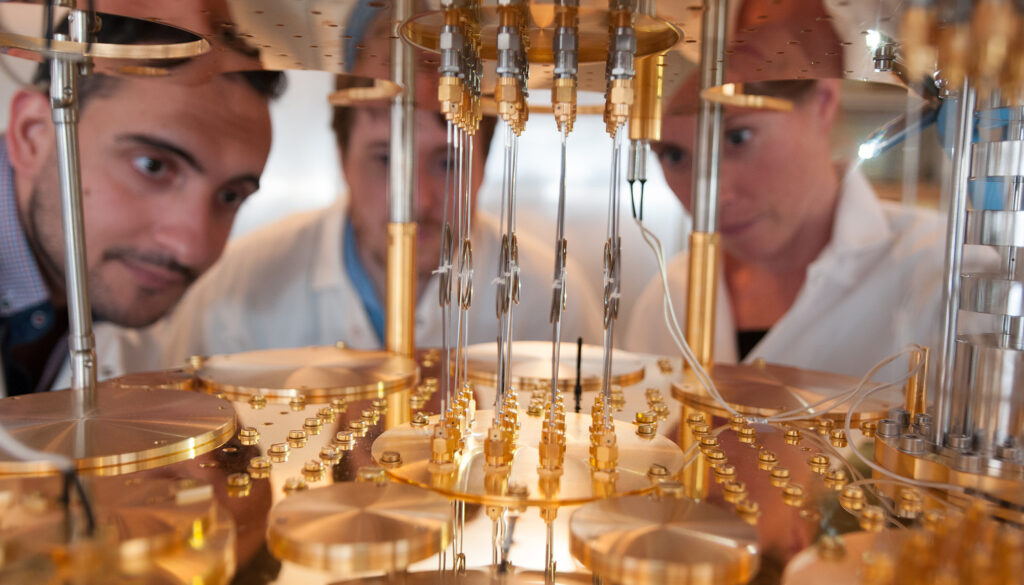
Keegan Houser, UC Berkeley
The theory of quantum mechanics, which describes how matter and light interact at the smallest scales, has been around for more than 100 years. It explains many aspects of nature that defy common sense, such as the fact that light behaves like both a wave and a particle — at the same time. The phones and computers we use daily employ semiconductor chips that operate because of quantum effects. Quantum mechanics describes why some materials become superconductors at ultracold temperatures, and also how plants absorb light for photosynthesis.
Researchers in labs around the campus have long explored the quantum properties of new materials, clusters of cold atoms, excited single atoms and chemical interactions, to name a few. Others take advantage of the known quantum properties of matter to make sensitive detectors for magnetic fields or gravity or to make precise atomic clocks.
Scientists are also leveraging another weirdness of quantum mechanics called entanglement — first proven in a UC Berkeley physics lab in 1972 — to build quantum computers. Entanglement links the fates of one or more particles such that what happens to one instantly affects what happens to the others, no matter how far apart they are. Quantum computers are based on manipulating entangled quantum bits — qubits — to solve some problems that would take a classical supercomputer an eternity.
As these fields have ramped up, UC Berkeley researchers have entangled themselves in numerous quantum efforts spearheaded by the National Science Foundation and the Department of Energy. UC Berkeley is the lead institution for the NSF-funded Challenge Institute for Quantum Computation, which addresses fundamental challenges to the development of the quantum computer, including the training of new quantum scientists.
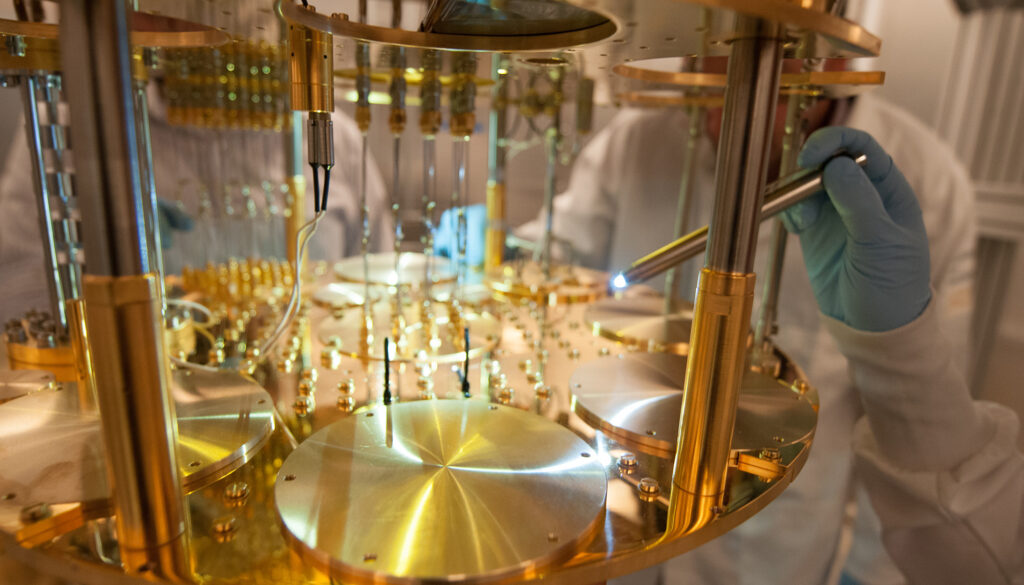
Keegan Houser, UC Berkeley
UC Berkeley and Berkeley Lab also partner on DOE-funded efforts, such as the Quantum Systems Accelerator to explore different types of qubits and computing algorithms, the Advanced Quantum Testbed, an incubator for innovative quantum computation technologies, and QUANT-NET (Quantum Application Network Testbed for Novel Entanglement Technology), which hopes to build a network to teleport information between quantum computers on the campus and at Berkeley Lab via optical fiber. Another effort, Quantum Algorithms for Chemical Sciences, focuses on developing algorithms that can be used with quantum computers to predict the outcome of chemical reactions.
The four new experimentalists will take campus research in new but complementary directions, Kahn said, focusing on using quantum systems as sensitive detectors to discover new physics.
“Each of them is linked to other research at Berkeley not currently relying on quantum sensing, but which could benefit from quantum links, such as applying qubit technology to sensing,” he said.
Speaking for her and her colleagues, Suleymanzade said, “I think all of our dreams revolve around how to get some sort of enhancements from these quantum mechanical properties that are either very different or advantageous in comparison to classical systems and classical resources.”
“All of these folks have one foot in fundamental science, the other foot in technological applications of quantum technologies,” Siddiqi said. “And that, of course, attracts a lot of local talent, helps build the workforce, and brings quantum a step closer to being more mainstream technology.”
Aziza Suleymanzade: Networking quantum computers
Suleymanzade will join the physics faculty in July 2025 after finishing up her postdoctoral work at Harvard University, her undergraduate alma mater.
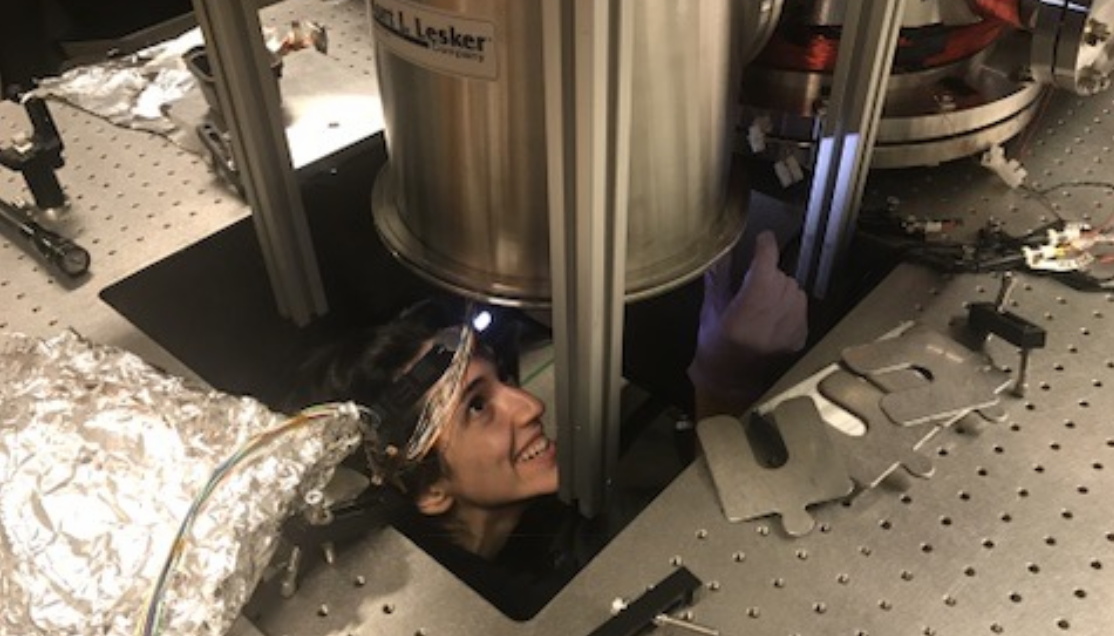
Courtesy of Aziza Suleymanzade.
Her main interest is using photons of light to interconnect quantum computers, networking computers in dispersed labs the way that digital computers are linked today through the internet. Doing this is complicated, in part because there are different types of quantum computers that use different quantum systems — trapped ions, superconducting circuits, even photons — as qubits. Just about anything that can be entangled can be used as a qubit for quantum computing.
The other challenge is linking the quantum information in these computers via entangled photons through a fiber optic cable without losing the entanglement that allows computation.
“In the future we will have distributed quantum sensing or distributed quantum computing, where you can imagine having a network of quantum nodes located in different places, even across tens of kilometers of distances, and being able to distribute entanglement and exotic quantum resources and being able to actually do computation distributed over larger distances, similar to how we do currently in classical computers,” Suleymanzade said.
She plans to tackle this challenge in her own lab in the basement of Birge Hall, where rooms are windowless to avoid extraneous light and vibrations are dampened to reduce the shaking of mirrors and lenses that direct the laser beams that provide the photons. She hopes to combine two types of quantum qubit systems already well developed — superconducting circuits and highly excited cold atoms called Rydberg atoms — into a hybrid system.
“I’m an experimentalist, so I’m really excited about bridging these platforms together to create new quantum systems with capabilities that are not just the sum of the two,” she said. “My motivation is to get entanglement out of these systems into the world.”
A native of Azerbaijan, she grew up in Russia but finished high school in Islamabad, Pakistan, where she learned enough English to apply and be accepted at Harvard. After earning a master’s degree from the University of Cambridge in the United Kingdom, she completed her Ph.D. at the University of Chicago and returned to Harvard to work in the quantum optics lab of Mikhail Lukin.
Chiara Salemi: Dark matter axions
The search for dark matter — the mysterious missing mass in the universe — has moved into the laboratory, with a focus on finding evidence for a theoretical dark matter particle called the axion. As a doctoral student at the Massachusetts Institute of Technology, Salemi helped build a table-top experiment called ABRACADABRA (A Broadband/Resonant Approach to Cosmic Axion Detection with an Amplifying B-field Ring Apparatus) to try to detect these particles, which should be all around us. Currently in a joint postdoctoral position at Stanford University and the SLAC National Accelerator Laboratory in Menlo Park, she’s working on a low-mass axion detector called DMRadio, a scaled up version of ABRACADABRA, and a high-mass axion detector called BREAD (Broadband Reflector Experiment for Axion Detection).
She plans to continue her search for axions at Berkeley employing superconducting circuits — qubits and superconducting quantum interference devices (SQUIDS) — as detectors.
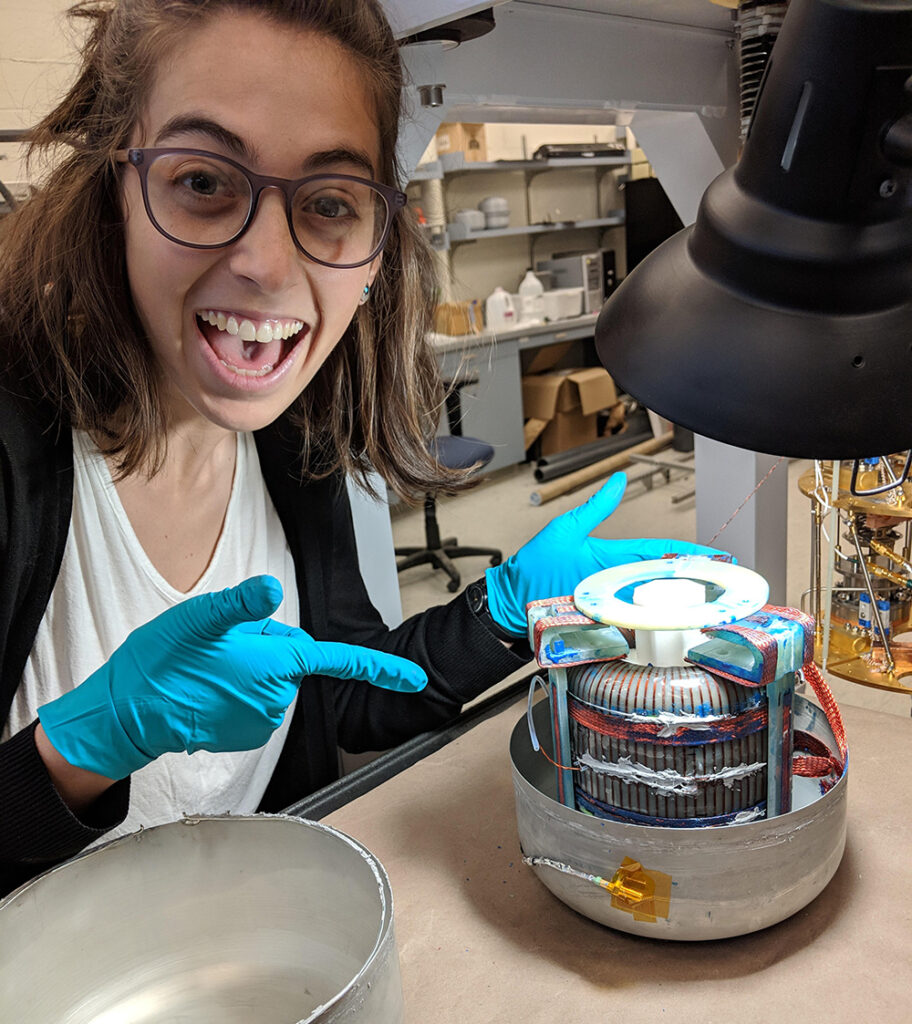
Courtesy of Chiara Salemi
“If axions themselves are very light, that means there have to be a lot of them, so instead of treating the axions as individual particles, we look at the coherent effect of all of the axions acting together as a classical field,” she said. “You can do classical electromagnetism to study how they interact, but quantum sensors are a perfect way to detect these very tiny electromagnetic effects.”
The superconducting circuits used as qubits in quantum computers are ideal for quantum sensors, since they have been studied extensively.
“You can’t really build a quantum computer to do practical things right now. But the level that quantum technology is at right now is basically perfect for developing these quantum sensors,” she said.
Qubit sensors would allow her to look for high-mass axions in a range so-far unexplored. SQUIDs, another type of quantum circuit, are better suited for detecting low-mass axions.
As result of her current joint position at Stanford and SLAC, she’s become accustomed to collaborating with colleagues at DOE labs. At Berkeley, she will be affiliated with Berkeley Lab and is eager to interact with theorists and experimentalists there and on campus. She is already collaborating on the DMRadio experiment with Karl van Bibber, professor of nuclear engineering.
A native of Chapel Hill, North Carolina, Salemi first delved into dark matter detection — looking for weakly interacting massive particles (WIMPS) as well as axions — while an undergraduate physics and math major at the University of North Carolina at Chapel Hill. After earning her PhD from MIT, she accepted a postdoctoral fellowship at Stanford’s Kavli Institute for Particle Astrophysics and Cosmology (KIPAC) and SLAC. She will join the physics department on Jan. 1, 2025.
Victoria Xu: Squeezed light
During its first three runs between 2015 and 2020, the Advanced Laser Interferometer Gravitational-Wave Observatory (LIGO) detected ripples in spacetime from about 90 mergers of black holes and neutron stars, all from relatively near events. Expanding LIGO’s cosmic reach for the current run, which began in May 2023, required squeezing more sensitivity from the detectors, and to Xu, that meant squeezing light.
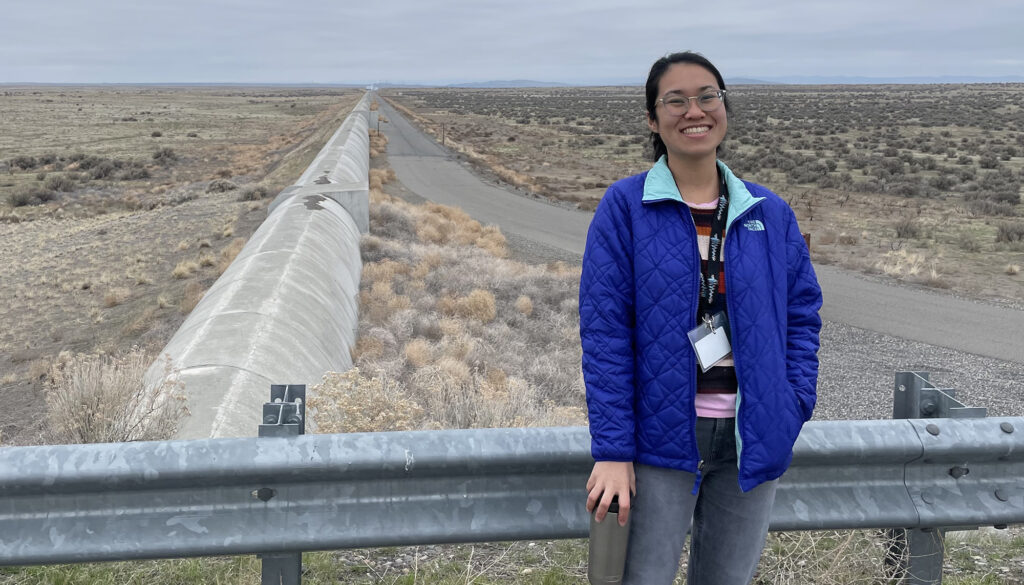
Gravitational waves are ripples in the fabric of spacetime. LIGO works by detecting the tiny fluctuations these waves produce in the distance two laser beams travel along perpendicular arms more than a kilometer long. If their paths are not exactly equal, as when a gravitational wave lengthens one arm and shortens the other, the beams interfere proportionate to the intensity of the gravitational wave.
Xu said that squeezing the laser light is important because the LIGO team is continuously optimizing all other aspects of the detectors, reducing the classical noise so that quantum noise prevails.
“Laser light is fundamentally composed of photons, and at some point quantization of light into photons limits you. That’s quantum noise,” Xu said.
She and the LIGO detector team, including colleagues at MIT, where she has been a postdoc for the past three years, upgraded the squeezing subsystem — first employed in 2019 for the third run — for the fourth round of observations. Within eight months, they detected nearly as many gravitational wave triggers from mergers in real-time as during the previous three runs combined. The reach of the detectors has increased by 65%, she said, extending the reach of gravitational-wave detectors far deeper into the universe.
Further reducing quantum noise with squeezing meant installing a special 300-meter cavity along the laser beamline that optimizes the entanglement between “squeezed” photon pairs to enhance detector sensitivity. Squeezing allows complementary properties of the vacuum field — phase and amplitude — to be manipulated. For some frequencies of gravitational waves, reducing noise in the phase produces a more sensitive detection, even though the amplitude noise increases. For other frequencies the opposite is true. Her focus at Berkeley will be in further applying quantum technologies to maximize detections of merging massive objects in the universe.
“We are really pursuing the best possible measurement that can be made,” she said. “It’s pretty cool because, for me, I get to work with this great team of people. I get to learn from scientists all over the world and build a new detector that’s going to discover new things about the universe. It’s kind of the best of all worlds. It checks all the boxes I like.”
A Bay Area native, Xu attended UC Santa Barbara, majoring in physics, and came to UC Berkeley as a graduate student, where she worked on atom interferometry with Holger Müller. After receiving her Ph.D., she moved to MIT to work on laser interferometry with the large LIGO team. In January 2025, she will join the Berkeley faculty.
“It’s like a homecoming to me,” she said.
Harry Levine: Fun with qubits
Levine will come to UC Berkeley in July 2025 after a four-year stint at the AWS Center for Quantum Computing, a partnership between Amazon Web Services and the California Institute of Technology based on the university’s campus in Pasadena. There he has been working on one of the most popular types of qubits for quantum computing, solid state circuits cooled to cryogenic temperatures.
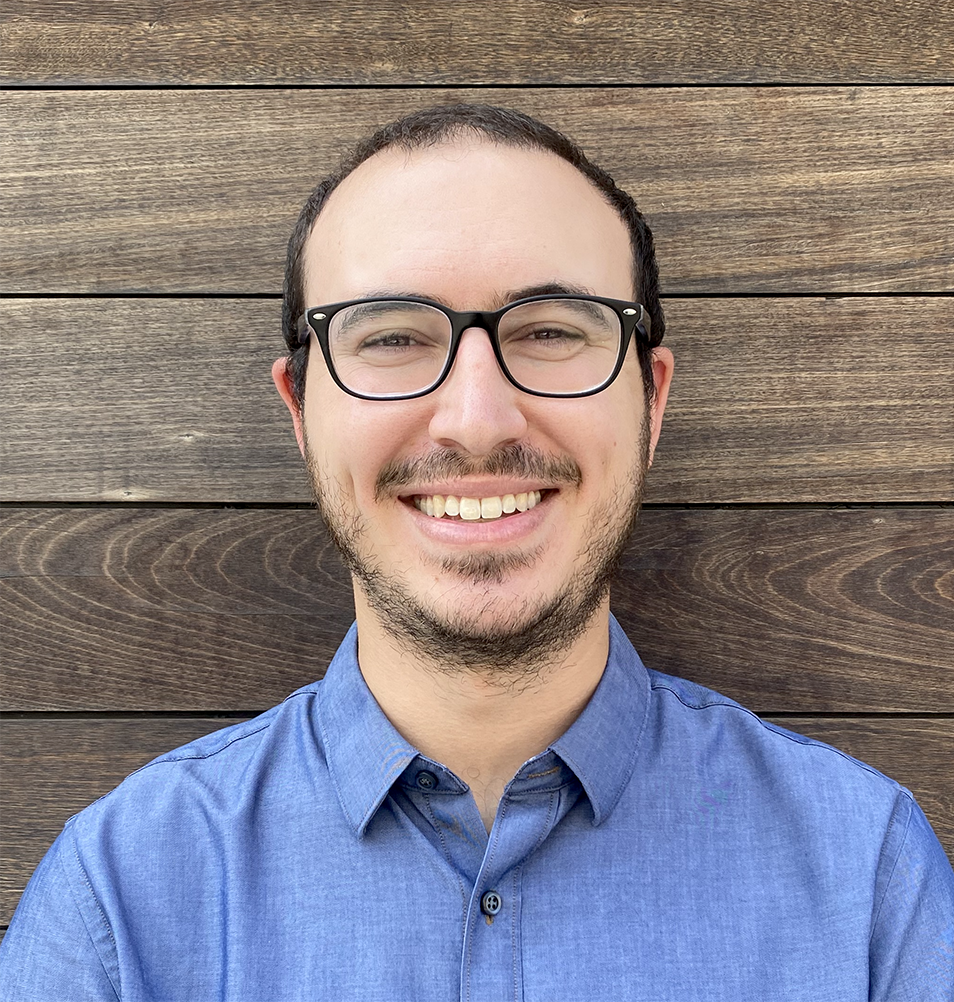
Courtesy of Harry Levine
At Berkeley, he hopes to turn to a type of qubit he worked on for his Ph.D. at Harvard University: single atoms levitated in vacuum chambers. He plans to build vacuum chambers to study and control these at the level of each individual atom. An interesting challenge, he said, is to learn how to control and entangle the quantum motion of clusters of atoms.
“Now that we know how to control atoms with a very rich toolbox these days, we can think about taking multiple atoms and delocalizing all of them in an entangled way,” he said. “I think what’s so exciting about it is, it can offer us a new way to try to make the most macroscopic, crazy quantum states that you can imagine, to try to push the bounds on how massive of an object can you put in a superposition state. That’s kind of always a frontier in which you want to observe quantum effects in larger and larger systems and over more and more macroscopic length scales.”
He’s also interested in ways to suppress the noise in quantum systems, which causes them to lose their entanglement, a process called decoherence. One possible way to reduce decoherence, that is, increase the lifetime of entangled qubits and decrease the errors in quantum computing, is to group qubits together into “logical qubits” that may be less susceptible to decoherence. He plans to explore new strategies for doing so, leveraging and expanding on some of the very exciting progress in the field over the last few years, he said.
Upon hearing that he had been offered a position in the physics department, “I was super excited,” he said. “Berkeley is an incredible institution. I have so much respect for the community here and feel so honored to be offered the chance to join. I think it’ll be an amazing place to start a research group and to contribute to the educational mission of the university.”
A native of Los Angeles, Levine obtained his undergraduate degree in physics and math from Stanford and his Ph.D. from Harvard. Now, he said, he’s taking the unusual leap back into academia after a stint as an industry scientist.